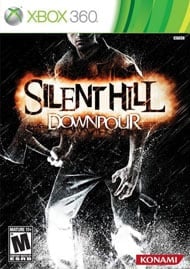When It Rains, It Pours
If you ask a Silent Hill fan what their favorite game in the series is, you’re likely to get one of two answers: the original Silent Hill, or its sequel, Silent Hill 2. I fall into the latter category, because the second game took what the original did great and added a more interesting story to it, with more empathetic characters and terrifying new enemies. Now, if you were to ask that same fan what they thought of the series after Silent Hill 3, you’ll almost definitely get a response along the lines of an unenthusiastic “meh.” The problem with Silent Hill of late is that it suffers from Sonic Syndrome, in that it’s failed to keep up with the times. The goal with Downpour was to take the series in a completely different direction. Konami put it into the unproven hands of a new developer, who then added their own unique twist to the game.
The result is something that looks, sounds, and feels only mildly like the rest of the series. The foggy, deserted resort town is still here, and fans finally have the chance to explore that mysterious section of the town that’s only been hinted at in earlier games. Everything about this game feels only loosely based in the Silent Hill universe, and while I understand that something needed to be done after a series of bland installments since SH3, the foggy town filled with Yamaoka’s eerie piano-driven score is sorely missed.
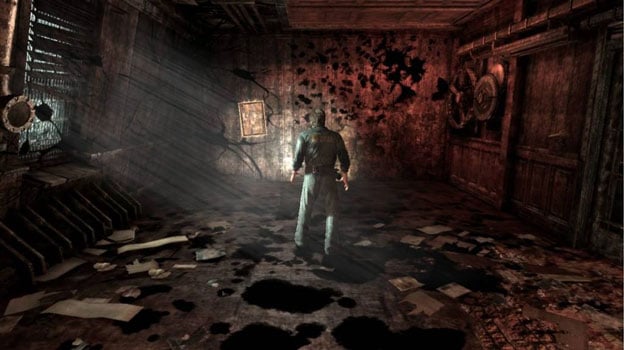
Now, that doesn’t mean composer Daniel Licht doesn’t do a fantastic job at giving Downpour a score that stands up to the rest of the series; overall, the music is just as creepy and atmospheric as anything Yamaoka did. Licht’s more organic, cinematic score has replaced the muted industrial sounds and subtlety of Yamaoka’s work. The major difference between this game’s audioscape versus previous Silent Hills is the influence of rain and water. Because these elements play vital roles in Downpour, Licht infused them into the score to blend the two together. It’s all incredibly beautiful, and I’m very much looking forward to how this affects the aural future of the series.
Downpour borrows some ideas from previous games, including a more restrained version of Homecoming’s combat, and the psychological horror that permeates practically every game in the series. It feels like a spiritual successor—like what BioShock was to System Shock 2 rather than what Resident Evil 2 was to Resident Evil. The fact that it continues the Silent Hill tradition of introducing a new story and cast of characters with each new game only strengthens the feeling that this isn’t entirely a Silent Hill game.
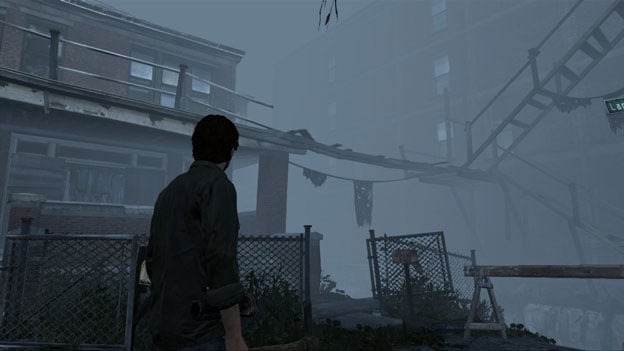
Don’t get me wrong; this is an often terrifying and always unsettling game that throws some delightfully deranged creatures at you. This game excels at blending old school horror with more modern elements like open world environments, gorgeous visuals, and side quests. This is as close to the horror games of the late 90’s and early 2000’s as you’re going to get these days, and while certain things—like an awful combat system—might turn off newcomers, it’s exciting to see the series return more closely to its roots.
It’s disappointing, though, that Vatra couldn’t refine the combat system so it wasn’t quite as frustrating. Even including a targeting feature would’ve made it much less infuriating. I get why it wasn’t at the top of the to-do list, because this isn’t about holding your ground. If you see a monster, it’s usually better to choose flight over fight. With that said, there are several sections in the game—including much of the final act—that require you to do quite a bit of fighting.
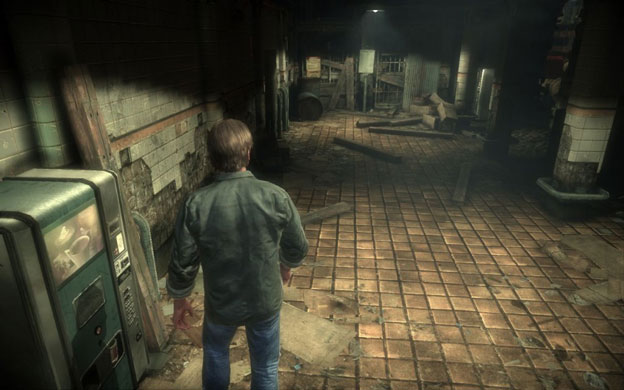
The unbreakable weapons are also unforgivable. I can’t name a single game where including weapons that break after only a few hits was a good idea, and it certainly doesn’t work in Downpour. This type of system is usually added to make the game feel more realistic, but when a fire axe breaks after helping me take out one or two monsters, that’s not realistic; that’s ridiculous.
In case you feel like you’ve given the series enough chances, there are a few major differences here that might change your mind. The first is the inclusion of the aforementioned side quests. This means you’ll have the main story, and along the way you’ll come across people who need your help. For the most part, these optional objectives are interesting, and they’re perfect for hardcore fans of the series that want to wring every drop of content out of the game. Silent Hill is a little more open than what we’re used to, though it’s not a completely open world.
Fans will be happy to know the Otherworld returns, and fairly often too. The transition from the normal world to the more dangerous Otherworld is always fun to watch, even if it means you’re about to be forced to do something that’s decidedly not fun. Unfortunately, the way you’ll be spending your time in the Otherworld is by running from a red light that chases you and drains your health. More often than not, these segments turn into frustrated chase sequences where you have to rely heavily on trial and error.
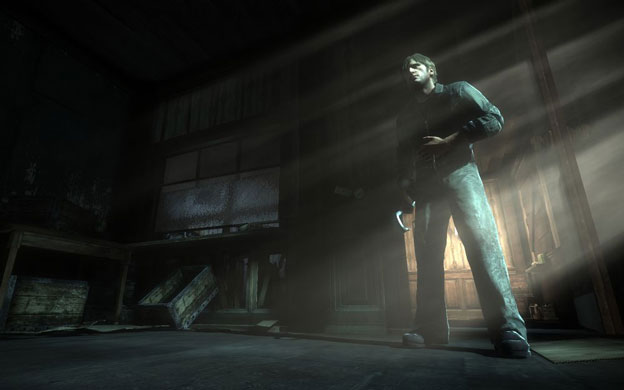
Vatra made a smart move by pulling Downpour away from the more recent games in the series, like Homecoming and Shattered Memories. It never looks quite as good as, say, an Alan Wake or Dead Space, but there are some genuinely terrifying moments that are helped mostly by the well-designed world. It’s obvious that quite a bit of love and effort went into crafting this game, because the amount of detail here is incredible. When you’re outside, the town of Silent Hill is familiar, but different enough to still be intimidating to explore, especially due to the creatures that call it home. When you’re indoors, it’s easier to feel safer, but it’s always a mistake to drop your guard. The claustrophobic corridors of a deserted subway system are just as dangerous as the wide-open streets of Silent Hill.
If you’re a fan of Silent Hill, and particularly the first three games in the series, then there’s a lot here you’re going to like. For those unfamiliar with the series, this is a little more difficult to recommend, and that’s mainly because of the frustrating, unrefined controls.
When I first heard that Vatra was handling development of Silent Hill: Downpour, I wasn’t entirely convinced. Now that I’ve played through it twice, I can say without a doubt that this is the path Silent Hill needs to continue to take, because it has that old school survival horror flavor that fans, including myself, have been clamoring for since 2003.
RATING OUT OF 5 RATING DESCRIPTION 4.2 Graphics
It’s not the best looking game out there, but the wet new style works for the series. 3.5 Control
The combat is awkward and clumsy, and often makes the fights more frustrating than they should be. 4.5 Music / Sound FX / Voice Acting
Daniel Licht had big shoes to fill when longtime series composer Akira Yamaoka left, but his score matches some of Yamaoka’s best work. 4.1 Play Value
The side quests pad the game’s length and offer an incentive to return once you’ve beaten the game. 4.2 Overall Rating – Great
Not an average. See Rating legend below for a final score breakdown.
| Review Rating Legend | |||
|---|---|---|---|
| 0.1 – 1.9 = Avoid | 2.5 – 2.9 = Average | 3.5 – 3.9 = Good | 4.5 – 4.9 = Must Buy |
| 2.0 – 2.4 = Poor | 3.0 – 3.4 = Fair | 4.0 – 4.4 = Great | 5.0 = The Best |
Game Features:
